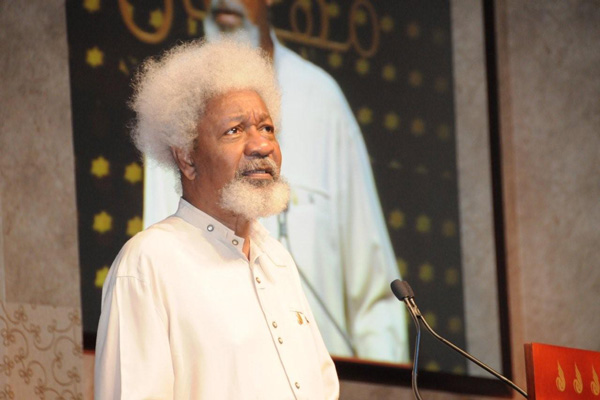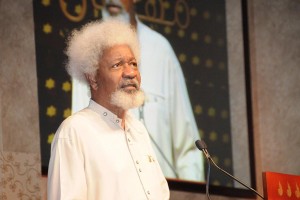In celebration of Mr. Wole Soyinka’s 81st birthday on Monday, we have compiled a list of the prolific writer’s most memorable plays…

1. The Lion and the Jewel: Performed in 1959 at the Ibadan Arts Theatre, this was one of Soyinka’s first plays in Nigeria. It interestingly explores the conflict between modernity and tradition in Africa through the characters, Lakunle, a schoolteacher and advocate of Western ideas he barely understands, and Baroka, the chief who is stuck in his traditional ways and sees modernity as a threat to his authority. Both men are fighting for the beautiful Sidi- The Jewel.

2. The Trials of Brother Jero: We follow the antics of a false prophet with a weakness for women in this thought-provoking piece. The satire which is primarily centered on proselytizing faith was first produced in 1960, in the dining hall at Mellanby Hall, University College, Ibadan to be exact. Readers will find Brother Jero’s attempts to manipulate his followers – all desiring more money and power – absolutely hilarious, and interestingly relatable too as these occur in today’s society.

3. Madmen and Specialists: Described as Mr. Soyinka’s most pessimistic play, the plot is centered on the powerful confrontation between good and evil forces. This isn’t surprising considering the playwright’s personal mood at the time, along with general emotions surrounding Nigeria’s civil war (1967-1970). The ultimate example of evil is committed by its major character, Dr. Bero, who imprisons his father, Old Man, pretending to protect him from going senile.
We look forward to the PAWS produced re-enactment of the play at Terra Kulture next week Sunday.

4. Ake, The Memoirs of Childhood: We’re given a sneak peek into the life of our favourite playwright with this autobiography of his boyhood before and during World War II. Back then, he lived in a Yoruba village in western Nigeria called Aké. Soyinka is presented as a curious child with a love for books and getting into trouble. He was raised by ardent Christian parents, and in contradiction, by a traditionalist grandfather who introduced him to Yoruba spiritual practices.
In this book, we get to reflect with him on the is vivid evocation of the colourful sights, sounds, and aromas of the world that made him the prolific writer he is today.

5. The Strong Breed: Published in 1964, the play explores superstitious beliefs prevailing in the African society. It is additionally based on a tragedy that sees an individual sacrifice for the sake of the communal benefit take place. The protagonist, Eman becomes the village “carrier” in order to spare a young simpleton from beating and exile.

6. Death and the King’s Horseman: During the British colonial rule, a Briton prevented the ritual suicide of a King’s horseman in a Nigerian village. Mr. Soyinka remarkably used this story to produce a dramatic and awe-inspiring play widely known and loved. The play premiered in 1975 with American productions in Chicago in 1979 and Lincoln Center in New York in 1987.

7. A Dance of the Forests: This play was presented at Nigeria’s 1960 independence celebration to symbolically warn Nigerians to strive to prevent repeated mistakes. Many elites in the country were reportedly upset upon its release, with their class being portrayed as corrupt and superficial in the book. This made it highly controversial, and till date, it remains one of Soyinka’s most influential and recognized works.

8. Kongi’s Harvest: Soyinka premiered the play at the first Negro Arts Festival, Dakar in April 1966. Soyinka’s play became the literary first of several to denounce tyranny, and was perhaps the most distinguished aesthetically. The satire comically shows the degeneration our potential future.

9. The Beautification of Area Boy: We get a day in the life view of those on Nigerian streets, presenting the general disquiet and everyday racketeering they face. Notably, the story is one of Soyinka’s most recent publications, released in 1995. Its primary plot revolves around the police trying to clear an area of “undesirables” as a traditional wedding takes place between two wealthy families.

10. King Baabu: Who can forget this 2002 creation which was a naked satire of the General Abacha administration? We witnessed this through chronicles of the debauched rule of the protagonist and intriguing personality of General Basha Bash. The military leader takes over the country in a coup and is quick to ditch his military uniform for royal robes, crowning himself King. The play was published in 1967 in London and New York by Oxford University Press.
Which one of these outstanding works is your favourite? Let us know in the comments section.


